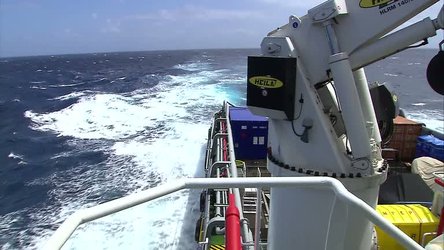

Spaceship to ship: where IXV will call home
Thank you for liking
You have already liked this page, you can only like it once!
A view of the marine tracking station antenna on the recovery ship, Nos Aries, now in the Pacific Ocean readying for next week’s crucial IXV mission.
The ship will support the 100-minute flight of IXV, which will test crucial new European reentry technologies. IXV is set for liftoff at 13:00 GMT on 11 February.
Following the ballistic phase, reentry – IXV’s most critical phase – will start at 120 km altitude, when the craft’s aerodynamic ‘lifting body’ shape slices into the atmosphere at 27 000 km/h, which mimics a spacecraft returning from a typical low-orbit mission.
This is when ground teams in Europe and on the ship will be most anxious, as nothing will have been heard from the wingless spaceplane since before the start of reentry.
Reentry starts about 64 minutes into flight and lasts about 20 minutes. During reentry, the thermal protection on the underbody will be exposed to temperatures of around 1700ºC – hot enough to melt nickel.
Meanwhile, in the Pacific Ocean, slightly north of the equator and about 25 km from the target splashdown spot near 3°N / 123°W, the antenna on the Nos Aries will be pointing at IXV’s expected trajectory and listening for ‘AOS’ – acquisition of signal. Hearing it will indicate that reentry has gone well.
Experts from the Agency's Estrack ground station network will be on the ship to support the crucial tracking activity.
More about ESA's tracking station network
Follow IXV on Twitter @esa_ixv
-
CREDIT
ESA–T. Javidi -
LICENCE
ESA Standard Licence

Nos Aries ship heading for the Pacific Ocean

Nos Aries ship heading for the Pacific Ocean

Nos Aries ship heading for the Pacific Ocean

Nos Aries ship heading for the Pacific Ocean

